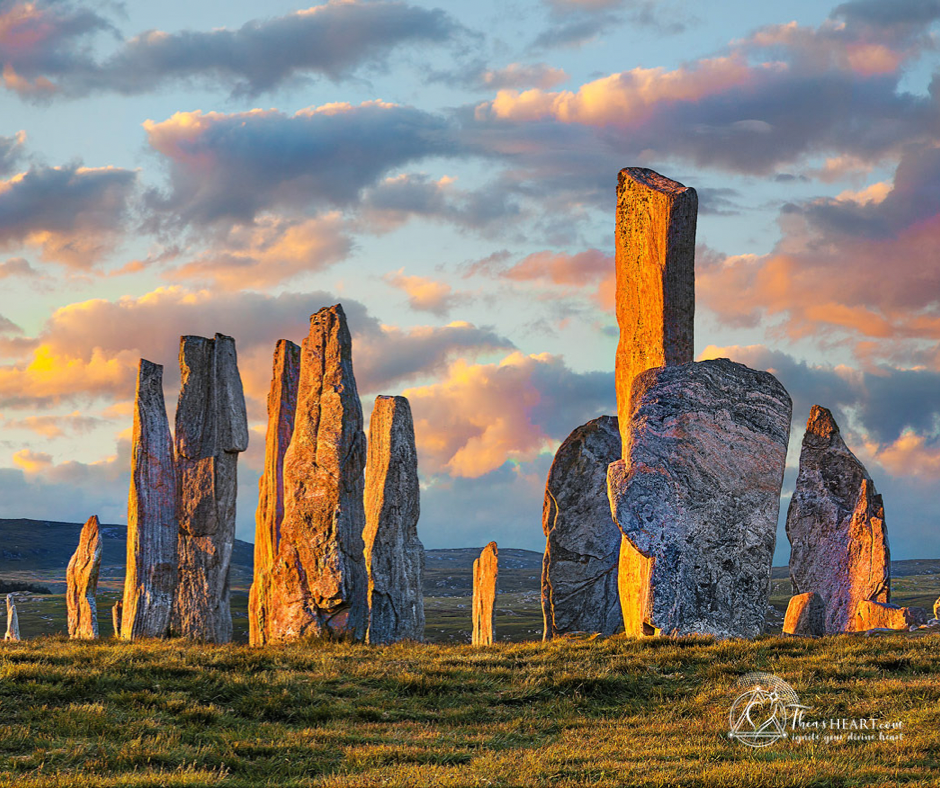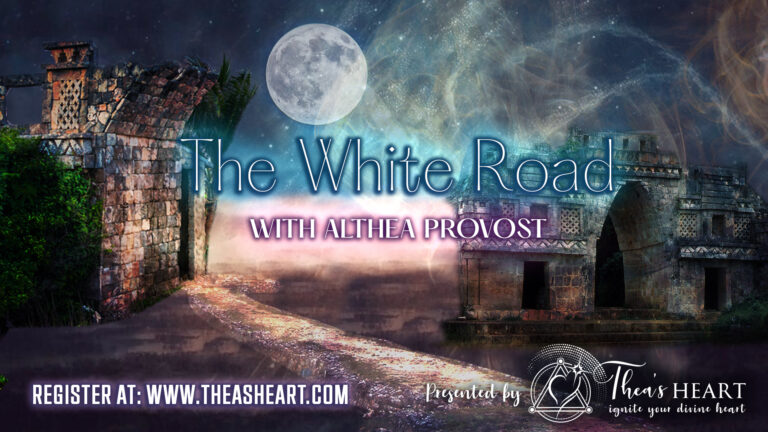Callanish, Isle of Lewis, Scotland
53 Stones, one heck of a beating heart.
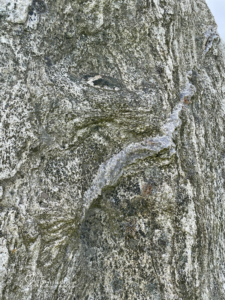
Words are inadequate to fully express the moment my eyes glimpsed Callanish I, the main site on top of a headland jutting into Loch Roag. Those long-haul flights followed by a puddle jumper have a way of challenging your body and mind —should I continue discovering and sharing remote neolithic sites? Upon the first glimpse, as I turned the car onto the main road toward the visitor center, I audibly gasped. The engineering feat, the timeless beauty, and the inexplicably feeling of… Onsite, I touched every stone and was touched as if I were welcoming long-lost friends into my house for a grand fete. Quietly, I moved slowly about the site noticing the Lewisian gneiss standing stone people: their height, width, unique shape, and visible character. While I was very present, a part of me went far, far away. In the visitor center, my husband took a picture of me looking out the window–my mind was elsewhere but where? I do not know. Assimilation took time, I would later discover that answer and glimpse an understanding of how this site, continues to educate.
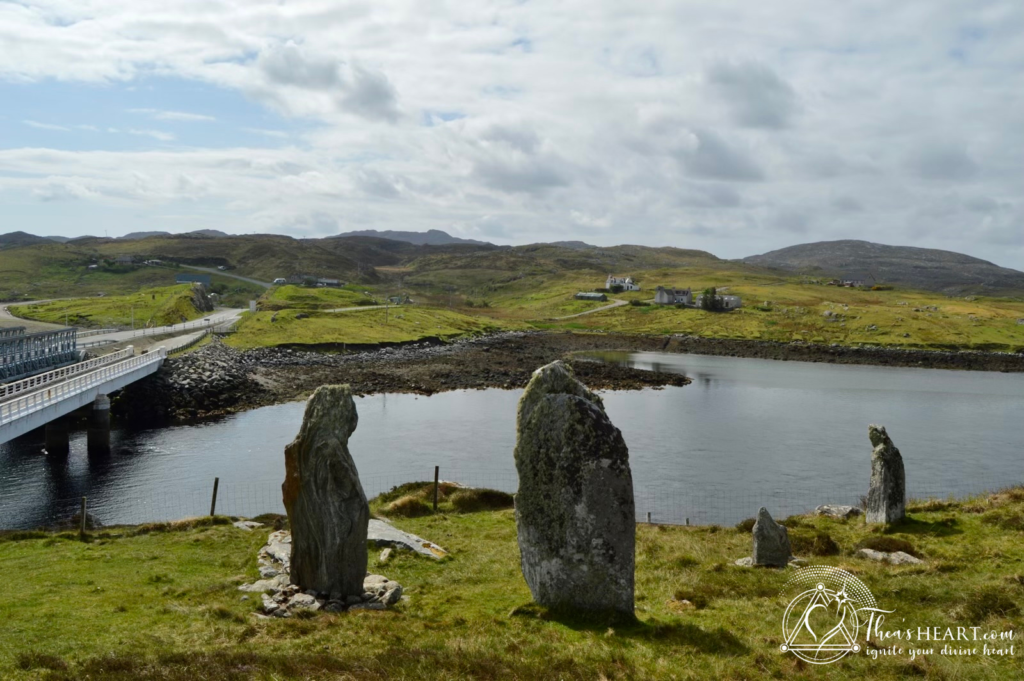
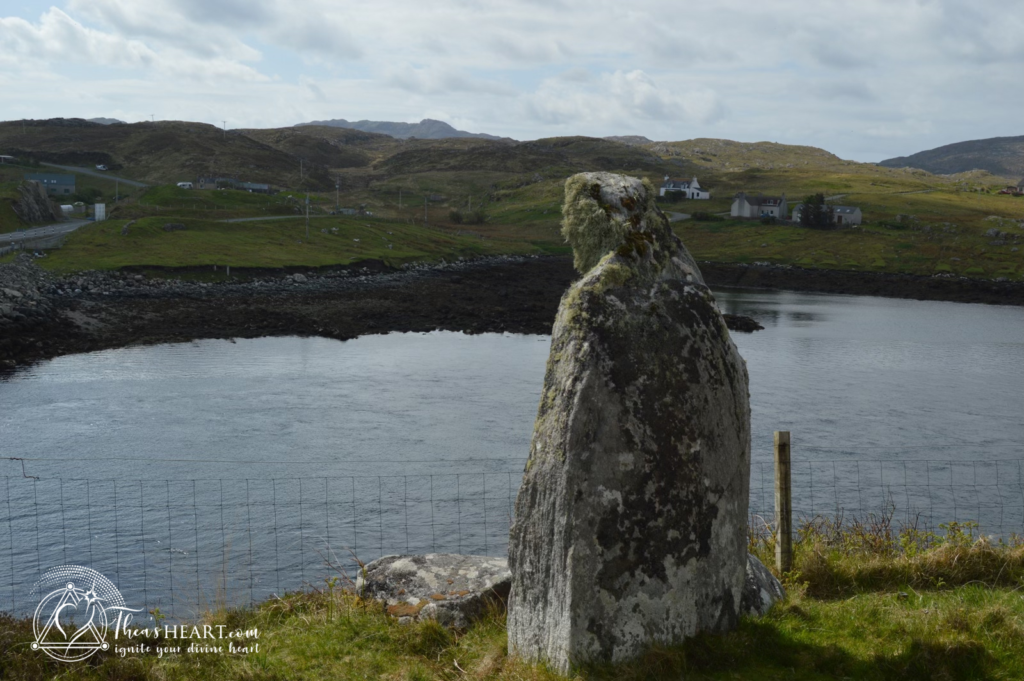
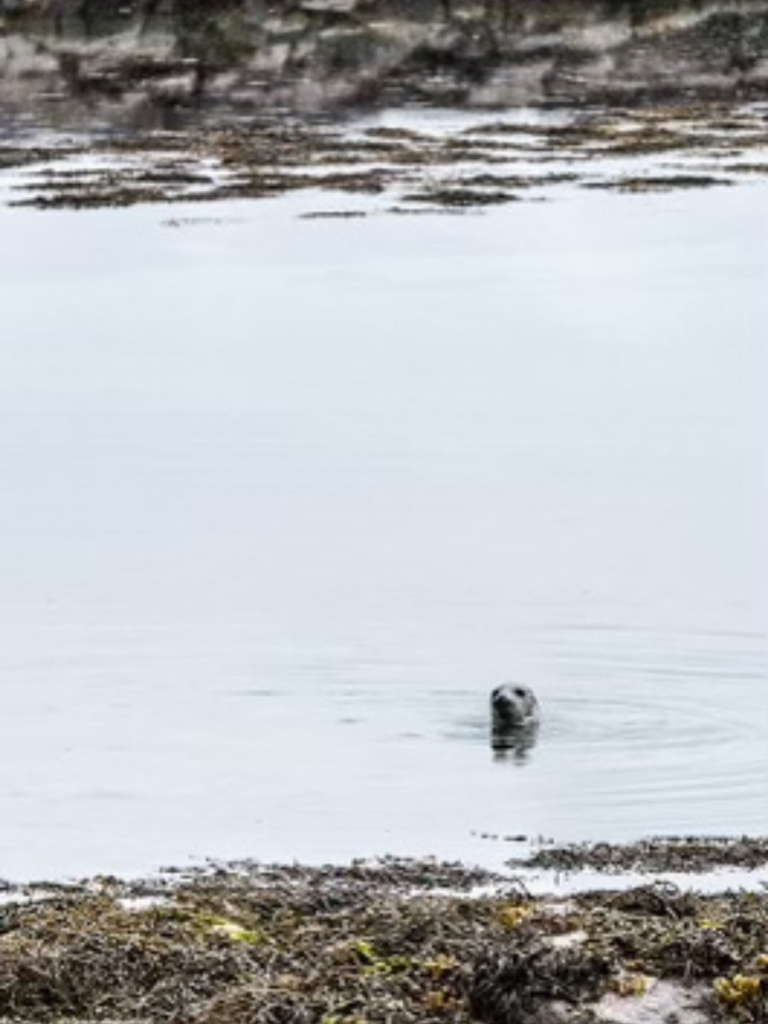
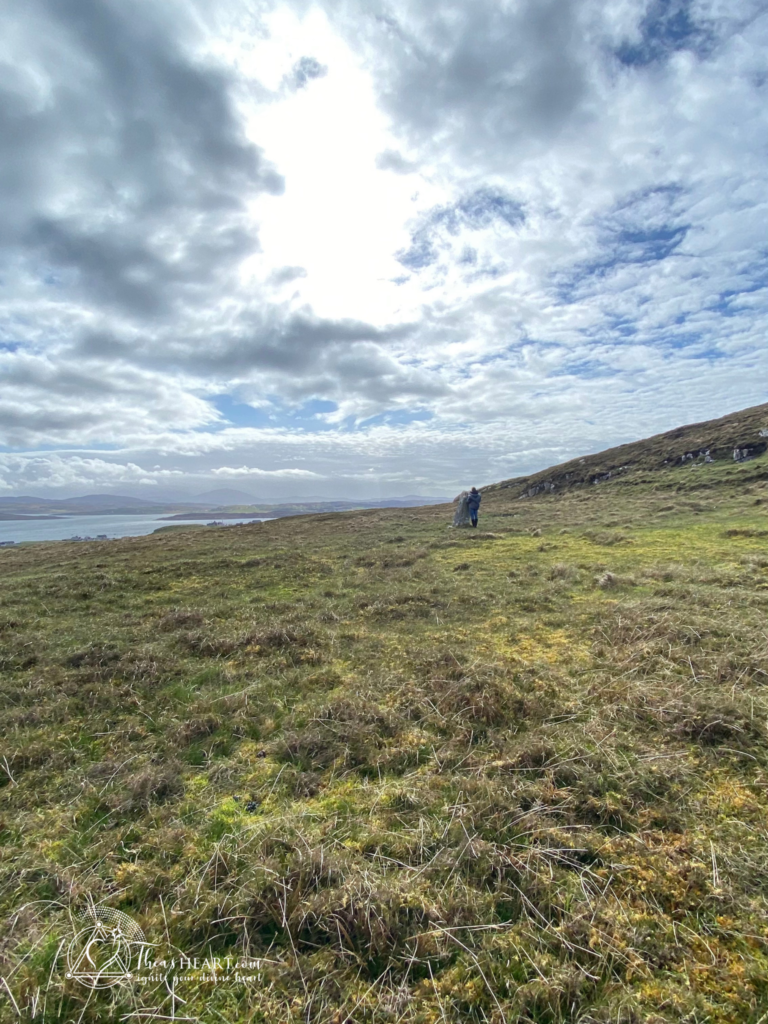
The Watchers
Callanish site VIII is a set of ancient standing stones in a semi-circle near the cliff edge on the south side of the island of Great Bernera in the Outer Hebrides of Scotland. The islands of Bernera and Lewis are connected by a white concrete bridge situated above the waters of Loch Roag. For 5,000 years, The Watchers are standing stones that face the island of Lewis and appear to be observing the passage of time. Three stones stand 7 to 9 feet tall, and one smaller footstone clearly has been disturbed. Callanish standing stones are now situated in an ecosystem of rain-soaked peat with acidic soil and low vegetation, can we modern-day inhabitants appreciate how these ancient stones survived severe cycles of environmental change?
The Old Woman
She not only leans toward the cliff’s edge, but her stone self bends forward which is why I call her, The Old Woman. You wonder if this stone has been contemplating the variable 40-foot drop for the past 5,000 years or feels enthusiasm, like my husband, to spot an otter or seal said to populate the waterways below. In our case, an inquisitive seal popping up from the kelp beds from time to time to be continually photographed in low resolution. We borrowed the seal photo. Or perhaps, The Old Woman is wondering how the lone standing stone on the opposite side of the river, dubbed site VIIIA, is getting along? Think about the Neolithic people who through the power of collective consciousness were capable of socketing so many standing stones deep enough and in the “right” spot to withstand the chaotic tests of time.
The Lightning Stone
After a full day of exploring the farthest reaches of the Isle of Lewis, we arrived at the Callanish area at 5:30 pm, hungry and not quite physically ready to hike a series of unknown hills in search of the lone stone, officially called site XI, which I have named, The Lightning Stone. My husband was determined to find that stone given much of the day was spent exploring some of his interests –the windiest point situated at the land’s end, along with a rare red brick lighthouse, and blackhouses on the island – time was ticking. Thankfully, after much wandering, he found it. Here, like our ancient ancestors before me, I offered a private ceremony. I had traveled to Scotland to pre-scout out a future Starseed Adventure, and with my husband acting as photographer, he snapped a photo at the ceremony’s conclusion just when the sunlight lit up the clouds. The site itself is on a rocky hill that must be scrambled before reaching a flat plateau where just under 5ft or 3 meters, the standing stone can be found. The impression of a large circle is barely visible within the peat. It is within this circle buried beneath the peat layer a lightning strike pattern was discovered. Should you wish to discover more, I cover this site and others in my class, Lightning Initiations, Sacred Sites, and Ancient Archaeology. Notice how current technology allows us to barely glimpse let alone fully decipher the vast Callanish complex. Understanding the sky-earth orientations and ritual purposes…well that takes ancestral memory. I invite you to connect.
For the giveaway, I left a few items, including a quartz crystal purchased about 26 years ago from my late friends, Donna & Al Koon who owned and operated Light Reflections, an octagon-shaped crystal store situated on the corner street of Highway 17 and Russell street in Moffat, Colorado. It’s the same street you must turn onto to enter or leave Crestone. This hand crystal traveled along to countless sacred sites, bathed in starlight, moonlight, and sunlight during auspicious times, dipped in seas, crystal lakes, and sacred waters, and rested quietly on my desk or in my hand during countless energetic sessions. While I think of myself as someone who doesn’t keep things, this one had a long run and I enjoyed watching it grow in clarity to a fine water-like appearance. During the Pleiadian lineup no less, this crystal was passed to Callanish in full gratitude for an adventurous life path. I imagine the right person will find it.
©2022 Thea’s Heart, LLC™ – All Rights Reserved

